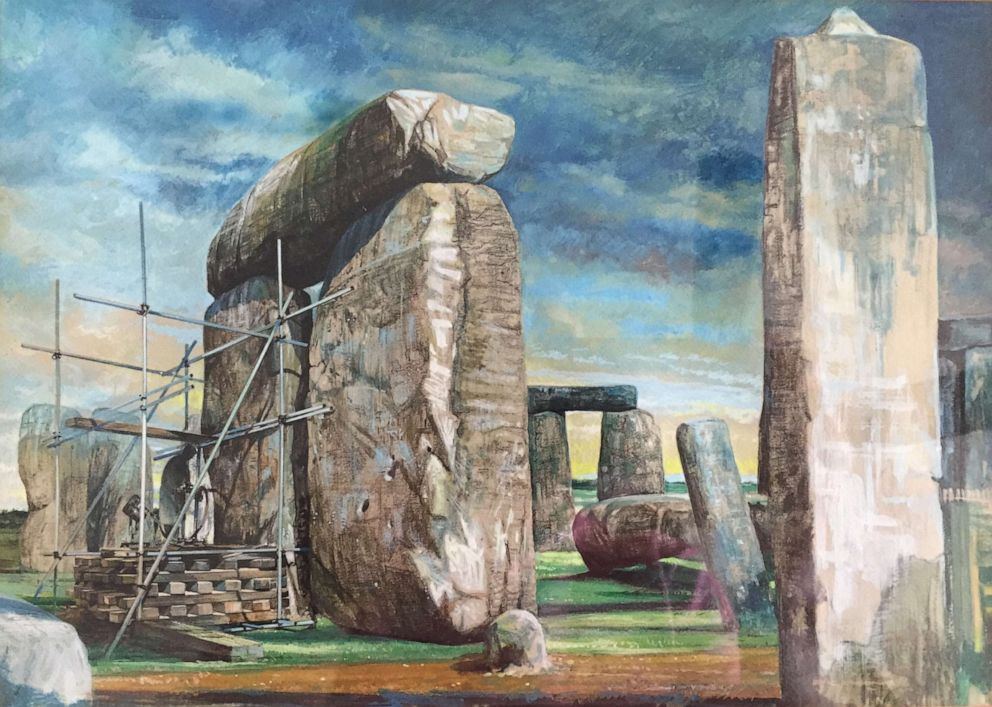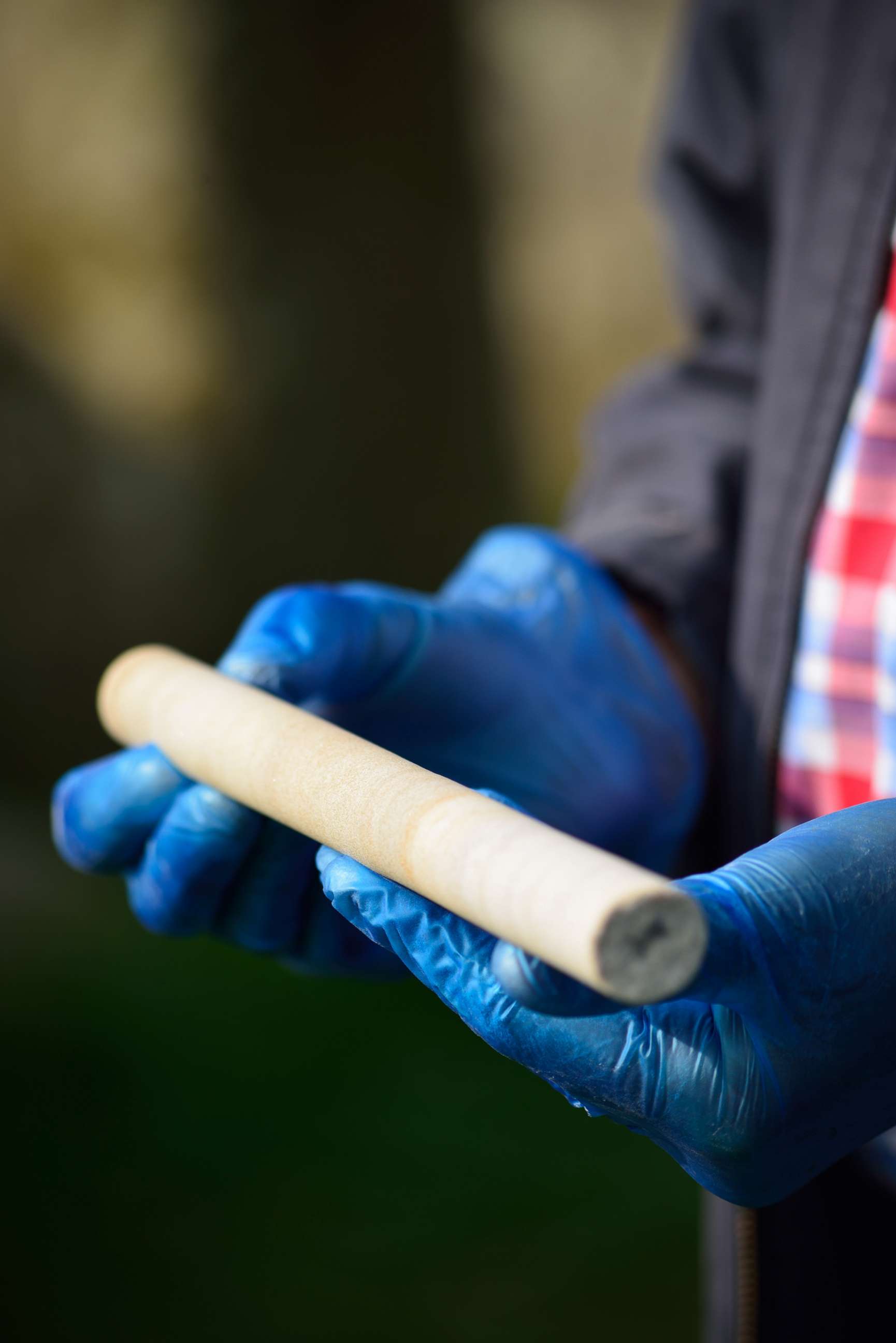Missing piece of Stonehenge returned 60 years later
Robert Phillips, now 89, took the piece when he was on the site in 1958.
LONDON -- For decades, a missing piece of sarsen stone from England’s famed Stonehenge monument was thought to have been lost during archaeological excavations. This week, the organization that takes care of Stonehenge announced the missing stone had been returned by a man living in Florida.
Researchers say the discovery could help uncover the origin of Stonehenge, which dates back to 3000 BC and is one of the world’s most visited ancient monuments.
“The last thing we ever expected was to get a call from someone in America telling us they had a piece of Stonehenge,” said Heather Sebire, the Stonehenge curator for English Heritage, the caretaker organization.
The stone was removed in 1958, when a diamond cutting company was brought in to do repair work on the neolithic monument. Cracks had appeared in one of the giant stones, and three rods from the sarsen’s core were drilled out to make room for metal enforcements. The repairs were covered by “small plugs cut from sarsen fragments,” making them inconspicuous, according to English Heritage.

One of the company’s employees, Robert Phillips, held on to one of those rods, and for years even displayed it in his office. Later, when he moved to the United States, he brought it with him, English Heritage said.
But on the eve of his 90th birthday, Phillips, who now lives in Florida, decided to return the stone to the care of English Heritage and, last year, his two sons traveled to Stonehenge to deliver it to Sebire, the curator.
The stone could help solve a mystery that has long bedeviled archaeologists and geologists, according to David Nash, a professor at Brighton University who is leading a project at Stonehenge.

An analysis of the sarsen’s core “will hopefully tell us where the different stones came from,” he said.
The whereabouts of the other two core pieces are still unknown, English Heritage said.




